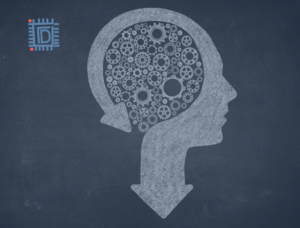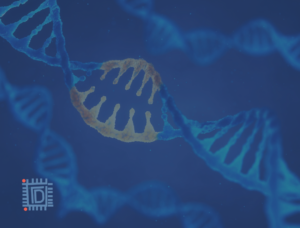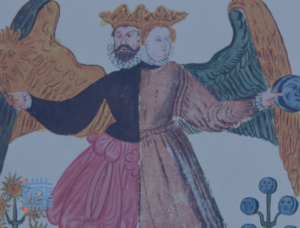How impactful are our thoughts in empowering our sense of creativity? The Hermetic teachings tell us that everything exists totally in the mind, which means everything we are actually experiencing is completely within our conscious mind, not in the perceived physical form. While this may be difficult to grasp on its surface, if you dig a bit deeper with an open mind to opportunities, the process becomes easier to understand and more impactful to boot.
We all experience the world through our 5 basic senses of sight, sound, smell, taste, and touch and while these senses are so uniquely the way by which we as humans experience the world, few of us consider what it means “to experience”. If we take for example the comfortable understanding of what we see, it can quickly become much more complicated and less comfortable as we begin to understand that what we think we see can often have little to do with what our eyes present to us and more with what images our brain presents to us for consideration. Our ability to see, just like any other sense, involves layers upon layers of sensory receptors sending signals, in this case to the eyes. This layer of receptors in the eyes absorb light pigments causing polarization, which creates electrical impulses that travel through our body to optical nerves in the brain. This means our ability to observe images is completely dependent on the brain and the chemical and electrical synapses which are transmitting those electrical or chemical signals to various parts of the brain for cognition. Therefore, what we see is more about what our consciousness allows us to see as compared to what our eyes are exposed to.
All is in the mind
If you think critically about what this all means, it truly points again to “EVERYTHING” being in the mind. For example, imagine being in an isolation tank which is a tank of water heated to 98o, allowing the user to immerse themselves in a solution of water and Epsom salt. Within this solution, the occupant will float weightlessly, as if the body doesn’t exist and because the water temperature exactly matches the body temperature, all sensations occurring in the body are countered and therefore absent. Now turn off the lights, put on earplugs and relax. This process removes the remaining senses of sound and sight from one’s perception and simulates a scenario of having one’s mind removed from the body and placed in a closed black box, separate and alone.
being in the mind. For example, imagine being in an isolation tank which is a tank of water heated to 98o, allowing the user to immerse themselves in a solution of water and Epsom salt. Within this solution, the occupant will float weightlessly, as if the body doesn’t exist and because the water temperature exactly matches the body temperature, all sensations occurring in the body are countered and therefore absent. Now turn off the lights, put on earplugs and relax. This process removes the remaining senses of sound and sight from one’s perception and simulates a scenario of having one’s mind removed from the body and placed in a closed black box, separate and alone.
In this scenario, the conscious mind serves no purpose, as it is completely isolated from all that can affect consciousness. What does all of this really mean? It means our conscious, self-aware mind would become separate from not just our sense of sight, but from all the other senses we possess. This would be the equivalent of taking your mind and hermetically sealing it in a box deprived of all exterior stimuli and therefore the experience of a void of black empty space. Or would it not necessarily be according to Hermetic principles as captured by the ancients? If we separate ourselves from all of our 5 senses, we still exist. We would remain conscious of our understanding of self because our consciousness is separate from our 5 basic senses, but what would the experience be like? Most people could imagine that black void where all that exists would be what we could imagine – nothing else. In this situation, the person would truly understand the statement of the“all is in the mind”.
While on the surface most people can buy into this process of operation, to go to the next step of understanding what it means, can be a more difficult concept to grasp. This is because as humans we like to operate in a comfortable zone where we can easily generalize our experiences and understand what was, and therefore have some idea of what will be. The Mental Alchemist however, sees the sense-based realm of our world as a completely separate universe of possibilities. Because they understand that their human experience and the cycle of birth, growth, peak before the decline is just a continuous process of evolution and devolution that can be directed and both science and religion are proving this to be the case.
In 1985 a number of specialists in various fields of cognitive science, evolution, quantum physics and neuroscience came together to conduct a series of international conferences. The goal was to bring the Dalai Lama and top Buddhist researchers together, to discuss the connections between Buddhism and the varying fields of research. The parallels that emerged between the two disciplines of the study were amazing, but even more amazing was the fact that those parallels align perfectly with the universal principles of reality – The Kybalion. The areas examined and aligned included Cosmology, Quantum Physics, and Cognitive Science, all yielding surprisingly similar conclusions to the understanding of our existence.
So, how do cosmology and Buddhism present similar conclusions, and how do they align with the universal principle of reality?
Cosmology is the study of the origin and development of the universe. Western science now understands and has determined that our universe began with a big bang and will most like continue to expand until it becomes dead and cold, but scientists also believe that a continual repeat is possible with endless returns. In fact, science now shows us that there may be a countless number of additional universes connected in space and time.
continue to expand until it becomes dead and cold, but scientists also believe that a continual repeat is possible with endless returns. In fact, science now shows us that there may be a countless number of additional universes connected in space and time.
Buddhist beliefs comparably understand that our universe is a repeated series of endings and beginnings, and that our universe is not the only one that exists. In fact, Buddhism understands that there are billions of universes that exist alongside ours, containing both life and consciousness as well.
Hermetic teachings tell us similarly that “the all creates in its infinite mind countless universes, which exist for eons of Time — and yet, to them all, the creation, development, decline, and death of a million Universes is as the time of the twinkling of an eye.”
This is how the cosmology and Buddhist beliefs interpret the reality of our world and validate the Hermetic teachings
Another area that was compared with Buddhism during those conferences was Quantum Physics
Quantum physics is the study of matter and energy at the most fundamental level, with the aim of identifying the properties and behaviors that form the fundamental building blocks of nature. Physicists have now recognized that the observer of matter cannot be completely separate from nature at the quantum level. It further states that electrons appear to have no size; they act like a massless point, only acquiring size at the exact place where it is measured. For example, if I wanted to measure matter and I used a device to do so, upon touching the matter I would receive a number that would only be revealed long enough to capture it but would disappear as soon as untouched. It in fact does not exist in the absence of the measuring device,
of identifying the properties and behaviors that form the fundamental building blocks of nature. Physicists have now recognized that the observer of matter cannot be completely separate from nature at the quantum level. It further states that electrons appear to have no size; they act like a massless point, only acquiring size at the exact place where it is measured. For example, if I wanted to measure matter and I used a device to do so, upon touching the matter I would receive a number that would only be revealed long enough to capture it but would disappear as soon as untouched. It in fact does not exist in the absence of the measuring device,
The Buddhist science suggests similarly that known things have no identity independent of the ways of acquiring knowledge, i.e. only with the device can it be measured – without the device it does not exist. Things have no properties of their own. They are dependently originated.
The understandings outlined in science and Buddhism align directly with the Hermetic teachings and suggest an answer to the fundamental question we’ve all been asked. If a tree falls in the forest and no one is there to hear it, does it make a sound? The Hermetic teachings, Buddhism, and Quantum physics all tell us that matter does not exist independent of other matter which translates to if no one is there to experience the falling tree then there is no tree to fall because only by being there to witness it, can the tree be actually brought into reality.
This is how Quantum Physics and Buddhism share similar conclusions and authorize the wisdom presented in Hermetic Teachings
Molecular biology and genetics
Western Science With Western Science, the set of genes or genetic material present in a cell or organism (the genome) has biological plasticity, which means it can adapt and change due to its environment. It further suggests that through epigenetics, early abuse and trauma can have an effect on the level of gene expression which may last throughout a child’s entire lifespan. With this, environmental factors can affect how we regulate our thoughts, emotions, and behaviors. It further goes on to suggest the following statements regarding Cognitive Science:
organism (the genome) has biological plasticity, which means it can adapt and change due to its environment. It further suggests that through epigenetics, early abuse and trauma can have an effect on the level of gene expression which may last throughout a child’s entire lifespan. With this, environmental factors can affect how we regulate our thoughts, emotions, and behaviors. It further goes on to suggest the following statements regarding Cognitive Science:
Destructive emotions are those that lead to harm. Negative emotions involve projecting negative qualities onto a person or group that actually are not present
Emotions can induce a refractory period, during which it is difficult to accept any new information about the situation
The Buddhist science Within Buddhist beliefs, the conditioning accumulated through prior experiences can create suffering for self and others, but through meditative training in new habits of thought, it is possible to effect changes in mind and body. From a cognitive science perspective, it suggests similar ideas to western science in that:
Destructive emotions are those that cause mental disturbance
Negative emotions involve a distorted assessment of persons and things
Negative emotions involve reification, whereby the mind attributes false qualities onto things. This produces a distortion in cognition that was initially valid.
In considering that “the all is in the mind” with the Hermetic teachings, and therefore the interpretation of our negative experiences negatively, this occurs not just at the conscious level but additionally at the subconscious and cellular levels. Within this process, our body regularly produces a series of 4 chemicals which include dopamine, oxytocin, serotonin, and endorphins in varying combinations and levels. While our experiences can impact the level of chemical production, through neural plasticity we are able to redirect those perceptions of the experiences and take them into a positive direction simply by changing the direction of the thought. In redirecting our thoughts, we change the polarity of our vibration to vibrate more rapidly. We also know that this chemical production occurs at the cellular level because we know that negative experiences predispose us to both physical and emotional harm purely because of how we perceive those negative experiences, i.e. how we choose to perceive the experience can be more impactful than the actual events taking place within the experience itself. By understanding the event and consciously determining its true impact, one can make more conscious of the course of action to be followed, and this is the equivalent to the process of neural plasticity. By understanding the true impact to self, it is possible to determine the opposite state of that impact and lean towards the opposite in thought. This alchemic process leverages the principle of polarity to move the state of discomfort from its source, to the opposite state, the state of desired consciousness and this in itself reduces the mental disturbance
In considering the source of creativity, the principle of Correspondence within the Hermetic teachings proves to us that nothing comes from nothing and from something comes something sub-similar. This means all ideas are layered upon other ideas to create more complex ideas, i.e. creativity stems from the coagulation of ideas sourced from the layers. Nothing can be known or grasped without the understanding of the layers of knowledge necessary to make up what is known. It’s the equivalent of trying to understand multiplication without the knowledge of addition or subtraction. You may be able to multiply small numbers simply through rote memorization, but with larger numbers, it would be increasingly impossible to arrive at a correct answer without the more basic math.
comes something sub-similar. This means all ideas are layered upon other ideas to create more complex ideas, i.e. creativity stems from the coagulation of ideas sourced from the layers. Nothing can be known or grasped without the understanding of the layers of knowledge necessary to make up what is known. It’s the equivalent of trying to understand multiplication without the knowledge of addition or subtraction. You may be able to multiply small numbers simply through rote memorization, but with larger numbers, it would be increasingly impossible to arrive at a correct answer without the more basic math.
How the teachings made their way potentially to India and beyond has been lost to time, but trading had extended from the Mediterranean to the furthest points East as far back as 5,000 years ago. The Egyptians have had a trading relationship with the civilization of India as far back as the 3rd millennium BC for at least a precious stone known as lapis lazuli, found only in Afghanistan, a major trading partner with India at the time. Alexander the Great had also connected civilizations and trade in 356 BC and sought to actively create cultural exchanges as he worked to increase his empire beyond the footprint of his father, the former king of Macedonia.
Regardless of the path the teachings may have followed, it is important for everyone who seeks to increase their creative abilities, to understand the impact of what was both lost and found post the collapse of the Iron Age and the ancient, secretive beliefs of the time. Much of what we know today and in fact, much of the foundation of 21st-century western culture and civilization sprang from the teachings re-discovered by families such as the Medici family in 14th Century Florence, Italy, a time we now know as the Renaissance. This is also when the great Italian sculptor Donatello emerged with his revision of the religious figure David, harkening back to the great period of Grecian masterpieces. This style of design had been lost for over 1,000 years. Or consider artist, architect, engineer, and sculptor Filippo Brunelleschi who was the engineer, architect, and builder of the famous dome over the Florence Cathedral, a structure that had remained without a roof for over 100 years because of the technology of building domes as tall as the Florence’s Cathedral’s dome had been lost since the fall of Rome. It was in fact the rediscovery of 1,000-year-old designs and techniques collected by the Medici family from antiquity, and the brilliant mind of Brunelleschi, that sparked the understanding of creation once more and enabled the cathedral’s completion in the first place. Even the technique of using concrete to build the dome on the Italian Pantheon was lost as the recipe for concrete, a widely used practice during the Roman Empire’s reign, had been lost to time. It seems inconceivable now that something so fundamental to society, concrete for building, could have been lost potentially forever but this demonstrates clearly the importance experiences play in creating inputs from which we draw, to create larger ideas.
If You Want To Make Your Ideas a Reality, Schedule Your Free Consultation!
Follow us:
Facebook : Think Different Nation
Instagram : Think Different Nation
Twitter : @TDN_Podcast
